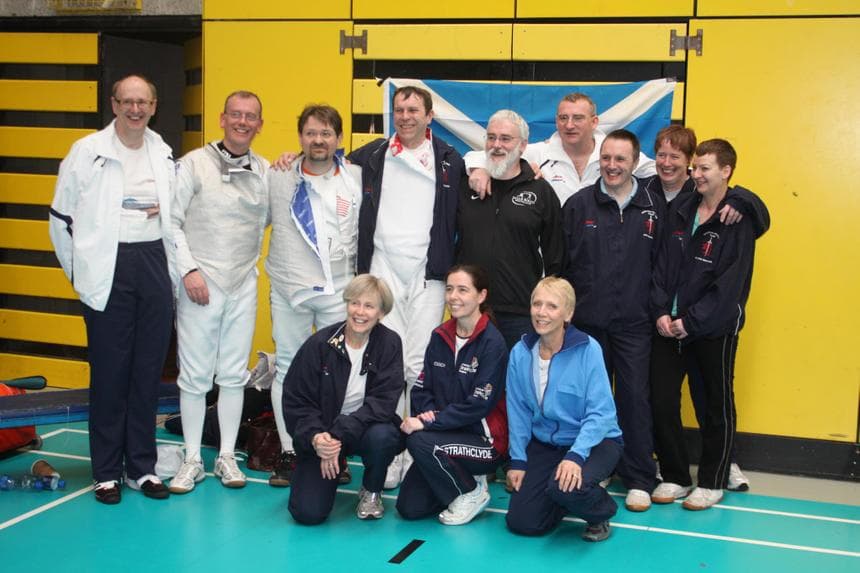A Leadership Journey: The Sporting Years (Part 2 - Belfast 4 Nations)

As noted earlier, Scotland was a no-show at the 4 Nations in 2008 (so by definition, it was a 3 Nations). I had been invited to go, but it was clear that it was just because of my previous success, and I had too many other things to address that year, so I said no. Amongst many other issues, one of the things that I couldn’t let rest was the aftermath of the tragic loss of my nephew Kyle the year before. I had done what I could to help with the search for him, but it amounted to nothing – he was gone, there was nothing I could have done, and it hurt me to see my brother Tom in such pain over his loss.
I will explain this more when I write about The Charity Years, but it was the main thing that drove me to think that I need to find things that make the world better. The most important one was the charity initiative, but the desire to make things better compelled me to build on the earlier motivational messages, and to call on the Scottish fencers to rise up and fight for their nation – and we had a chance with the next 4 Nations!
By 2009, in the run up to Belfast, I had by this time received a lot of training on leadership, but all of it assumed that the leader was co-located with the team, so I had to adapt the training to suit the remote engagement. I started sending out carefully crafted emails, aiming to inspire and motivate all the eligible candidates for the team. My main focus was the vison of Scotland’s success, and the part that the members of the team would play in that. I wasn’t looking to persuade skilled and experienced individuals to join, in order to achieve success – I was letting people know that we will have success, and inviting them to join in if they are willing to work to help us achieve it! I need to dig out some of the emails and at some point, publish them, because I had copied Fiona Haldane from Ireland (as organiser) and she told me afterwards she had loved reading them! The outcome of the emails and the fervour at the time was that I got an incredible response in terms of the squad – but one wholly unexpected but nevertheless very welcome additional response!
I had previously gained the agreement from Roy Clarke, the President of Scottish Fencing at that time, that Veterans should be treated like any other age group, so the logical follow-on was that anyone representing Scotland at the Veterans 4 Nations would be entitled to wear the current Scotland Team Tracksuit. I made the squad aware that they were entitled to this, but being an amateur sport, we have to pay for everything ourselves. So – I was completely blown away when one of our number – who requested anonymity – offered to pay for the tracksuits for the entire squad, which was a 3 to 4 figure sum!
Needless to say, this took the fervour to a new height, as we talked about striding in to the sports hall, loud and proud in our new tracksuits, and we likened it to the time that the Scotland rugby team had made a deliberate point of marching onto Murrayfield in a match against England, and gone on to victory. We didn’t go so far as to march in to the sports hall, but our arrival did have an impact, and the other nations did comment on the visible difference in Scotland as a unified team.
There is a lot more that can be said about that event, and I will return to some points, but from a leadership journey perspective, I learned about the importance of the team identity, about the deeper impact of the vision on the behaviour of individuals, and how it can cause them to rise up and contribute more than I would ever have expected.
Another key thing I learned was that there are different things that motivate different people. The squad at Belfast consisted of a mixed bunch in terms of actual fencing experience, ranging from those who started fencing in their 50s and 60s, to those who had been Commonwealth and Olympic contenders in their youth. They were united by a common desire to represent their nation, which for some, was the accomplishment of a lifelong dream! Viv Frith and Michele Narey were two of our squad who had only started fencing recently, had few results, but had a massive commitment to Scotland. To represent their nation was such a huge thing that they said they were proud to have worn their Scottish tracksuits on the flights home from Belfast, knowing they looked like “chavs” but proud anyway! They didn’t win at Belfast, but both have since developed and gone on to achieve World Championship results and become core members of the GB team.
At the other end of the spectrum, Sheila Anderson and Julia Bracewell were some of the few members of the squad who had consistently competed at the highest levels in their youth, and were now contemplating a serious return to the sport. Both fenced exceedingly well, and both then followed different paths, as I learned more about what people want to follow. Sheila had a growing commitment to returning to international competition, while Julia came to terms with her reasons for leaving the sport, and channelled her energies in other directions.
Returning to the event – it was a nail-biter. At the end of the first of 2 days fencing, it was clear that Scotland were in direct contention with England to win overall, which came as a shock to England, but a vindication to all in the Scotland squad that we had brought our commitment and team spirit to the table, and it had served us well. The celebration dinner and drinks on the Saturday night were an interesting time, as I was called on to make a speech on behalf of Scotland, and aimed to strike the balance between respect for our fellow nations and needling our English friends! The next day, it was close, but we didn’t quite make it, narrowly coming second to England by 2 matches. Nevertheless, our spirits were high, and I heard about the effect this had from John Crouch at the next 4 Nations, which I had volunteered to host in Edinburgh.
